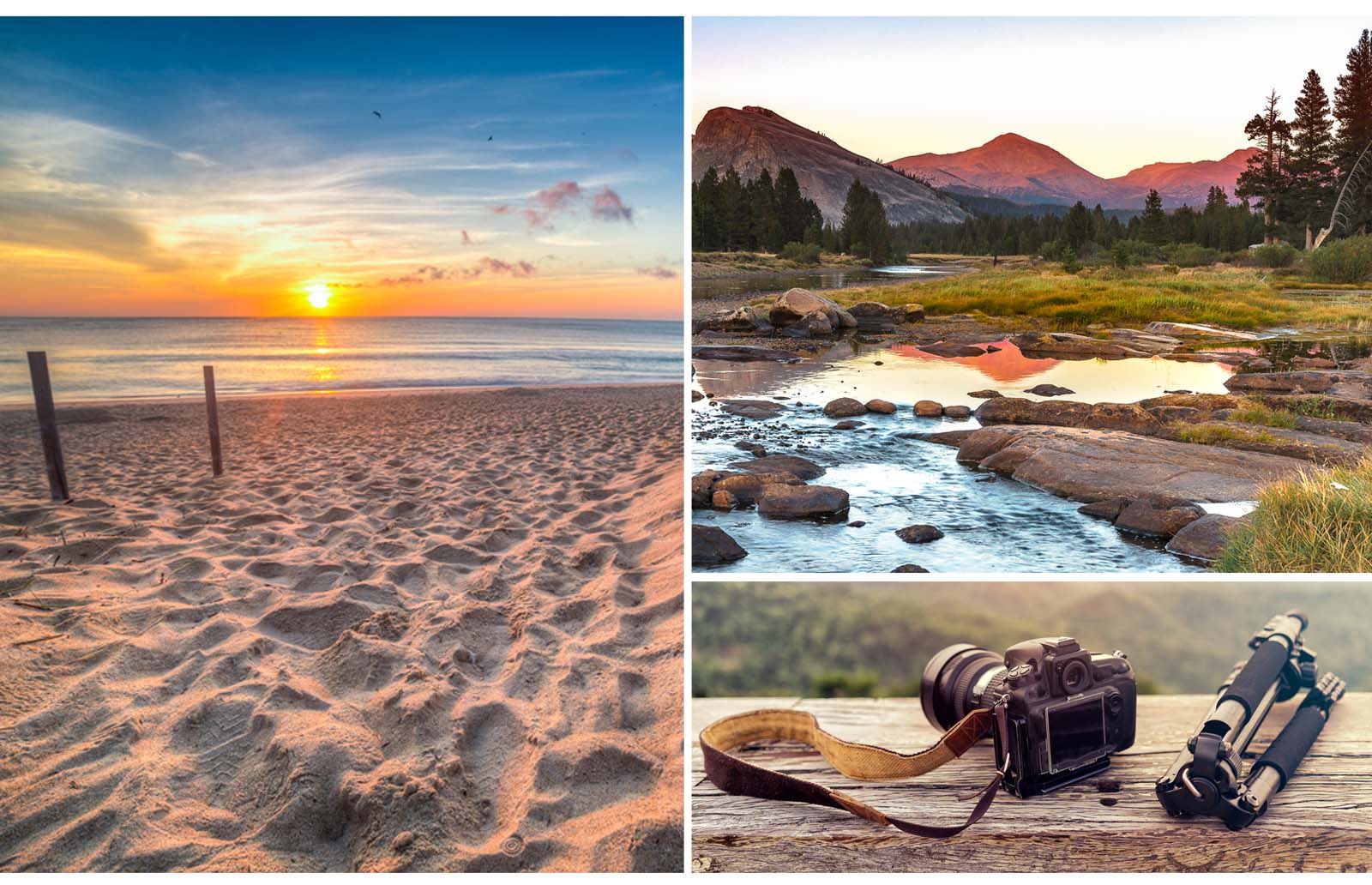Don't Lose Focus: 5 Landscape Photography Tips
December 30, 2020

Landscapes vary greatly, which makes photographing its unique characteristics tricky. It’s not as simple as framing the horizon. Sometimes, a landscape can even appear monotonous. But look again, and you’ll find not only the tiny details but you’ll appreciate the grandness of its scale.
From wide-open midwestern prairies to the craggy coastal Atlantic shores, know how to capture each type of scene with these landscape photography tips.
1. Dense Forests
Forests can take on different moods throughout the day and even season, so consider what kind of photo you want. Early morning fog can make it eerie, or the rays cast by the sun can make it magical and filled with wonder. Consider any elements you want to capture — like fall leaves or a winter pathway — that require a seasonal visit.
Since forests and woodlands are dense, make sure to compose the frame so the elements are noticeable. Take note of compositional features, such as treelines or patterns, to help focus on the subject matter.
Another forest landscape photography tip is to take advantage of both wide and telephoto lenses. A wide lens can capture the vast canopy above, while a telephoto lens can compress rows upon rows of trunks and limbs. Last, gather your gear in a camera backpack to climb for a high vantage point!
2. Wide-Open Prairies
Unlike dense forests, plains and prairie lands offer a wide-open landscape. But instead of seeking out a point of interest, remember the goal is to capture the vastness of the landscape.
Still, find something to capture the landscape’s personality and the viewer’s eye. This could be anything from a barn or herd in the far-off distance to the stream, dirt road or fence you’re following.
Consider bright skies and storm clouds in the negative space above. The horizon will likely be part of your shot anyway, so consider the rule of thirds and decide how much or little you want to capture.
3. Barren Deserts
Hot sandy deserts, while seemingly sparse, offer many opportunities for beautiful shots. There are more than a few landscape photography tips to capture its rugged beauty.
Take notice of the sand’s ever-changing colors. From dawn to dusk, the sun scatters light across the desert quite differently. Midday, you can get a glimpse of heatwaves, which you can capture with a long lens to compress them. If the desert is barren dunes, a wide shot can capture the dramatic landscape. At night, deserts offer minimal humidity and ambient light, making them the perfect spots to photograph twinkling stars and constellations.
In the desert, shooting the sun is about as tricky as photographing the moon. It takes skill, learning how to avoid an overexposed photo caused by the sun’s brightness. To prevent this, be sure to shoot in manual mode, holding the exposure with the shutter button halfway, and then reframing before the shot.
Also, use a wide-angle lens. A wide-angle lens will help combat the sun’s blown-out flares. Typically, this lens size will also capture flares, but you can see the flare and shift the frame to avoid it with an SLR camera.
Sand can ruin a camera, clogging gears or worse. So, make sure to get a weather-proof and sealed camera hard case to protect your equipment.
4. Beach Shores and Rocky Coastlines

Deserts aren’t the only places to capture sandy landscapes. Beach shores and coastlines offer lots of exciting subject matter. There are all sorts of fantastic photo opportunities and ways to compose your shots, from rocky cliff sides and lighthouses to tropical white sandy resorts with scattered cabanas.
Like with deserts, be mindful of the sand, especially with strong winds coming off the coast.
5. Flowing Rivers and Currents
Many landscapes are water sources, whether they are a lazy river, a plunging waterfall, or the ebb and flow of tides. Each with its unique look and surrounding landscape, these are often the chosen focal points or elements in a frame’s shot. So, when capturing a water element, consider how it moves. Capture a river running diagonally through the frame or the vertical of a waterfall.
Also, play with the water’s reflection. Does it reflect the bright blue sky or the dense forest’s autumn leaves? Pay attention to these details to create interest. Alternatively, you can reduce the reflective surface with a polarizing filter, rotating it to increase contrast and tweaking as desired.
Practice These Landscape Photography Tips Yourself
With these landscape photography tips, you’ll be taking award-winning professional photos in no time!
Last, if you wish to use photo-editing software to touch up your photos as you travel, prepare for whatever the rugged landscape throws at you and invest in a laptop case. From water to sand, it pays to protect your camera and other electronics.

SIGN UP FOR EXCLUSIVE OFFERS
Sign up for our newsletter and get exclusive access to new product launches, special offers and much more.
RELATED BLOGS














